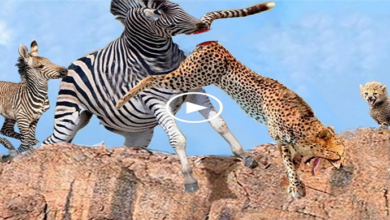
Stopping for a lunch break at Cattle Baron in Skukuza, Janine Westerweel (52) from Wellington in the Western Cape happened to catch sight of a saddle-billed stork catching his own bite to eat…
She told Latestsightings.com: “I was idly scanning the river with my binoculars to see what I could find when the saddle-billed stork waded out of the reeds on the left. We really love these birds, so I watched him for a while and then realized that he had found something in the water.
That’s when I grabbed the camera, hoping to get some “action footage” – and then saw it was a snake! This is a first for us and a really exciting event. As I continued to film, the people around us started taking an interest in what we were watching, and I think you can pick up in the video the growing excitement as they too realize what it is that he’s got.

Unfortunately, we eventually lost sight of him – being at a restaurant table on the deck overlooking the river, there was nowhere else to go – so we don’t know how it ended. I’m sure not very well for the snake though (we think it might have been a small python).
My advice with game and birdwatching is always to be still, quiet, and patient. You never know what will play out; or what will walk out of nowhere when you least expect it!
A large poisonous snake, when the parent bird left the nest, came in to eat the baby bird, by the time the mother bird returned, it was too late.

The short video begins with the snake climbing up a tree, reaching out to the bird’s nest. The snake deftly pulled out a young bird, while the young struggled desperately to find a way to escape.
The snake then brought the young bird to the ground, repeatedly biting its neck until it died. After that, the mother bird returned to the nest, panicking to find the baby bird.
It discovered that its child was being eaten by a poisonous snake and immediately launched a counter attack.
The snake almost swallowed the baby bird, although the mother bird was very brave when she risked her life to attack the predator, hoping to get the baby back.
Unlike the python, the snake did not vomit the spoils, but managed to escape with the prey in its stomach. It is unclear if the mother bird will be able to avenge her chicks, as the video also closes shortly after.

When seeing the newly hatched nest in danger, the adult birds rushed to dissect the poisonous snake, surprising the enemy.
Having the opportunity to visit Ngala private reserve in South Africa, tourist Georgie Lawless accidentally witnessed with his own eyes the “fight” weaver birds responded to a highly venomous snake when it tried to approach the nest of young birds.
It’s a green boomslang snake with deadly hind fangs. It is also one of the most venomous snakes in Africa. It soon discovered the target, so it hung on the tree to approach. Meanwhile, the adult birds constantly rush to peck to stop the predator.
Half of the body is twisted around the bird’s nest, the other half, the snake tries to bite back the birds. At one point it was bitten and almost fell to the ground, but in the end it still won. It burrowed its head into the nest, rummaged for food and took all that was inside, and quickly escaped. Seeing this, the weaver birds had to retreat.

Weaver bird is considered one of the most exotic birds in nature. The birds average only 14 cm in length and weigh less than 30 g, but can work together to build nests up to 4 m tall and weighing a ton. Their nests are made of hay, enormous in size, become inhabited by the whole flock and even last for a hundred years.
This bird often chooses thorny trees like acacia to make it difficult for predators to reach. However, in this case, the sharp spines of the acacia tree can’t “make it difficult” for extremely venomous snakes like boomslang. In particular, this snake has quite good eyesight on par with humans.
The boomslang snake, scientifically known as Dispholidus typus, is famous for its ability to camouflage like branches when hunting. It can stand upright and is almost motionless in trees. This species mainly feeds on small amphibians such as lizards and toads, occasionally eating some small mammals, birds and bird eggs by swallowing. The venom of the boomslang snake is so dangerous that a single bite can cause respiratory failure, heart failure and muscle paralysis to death.





